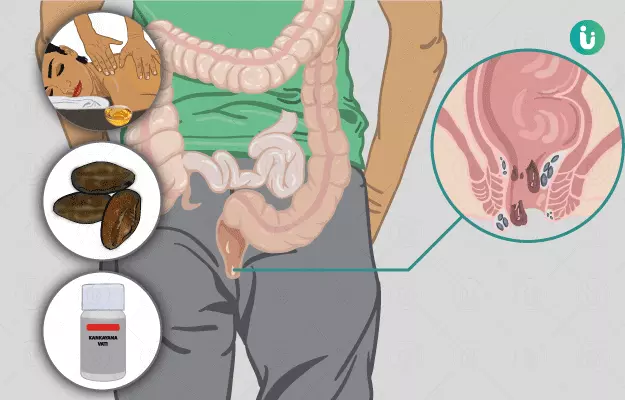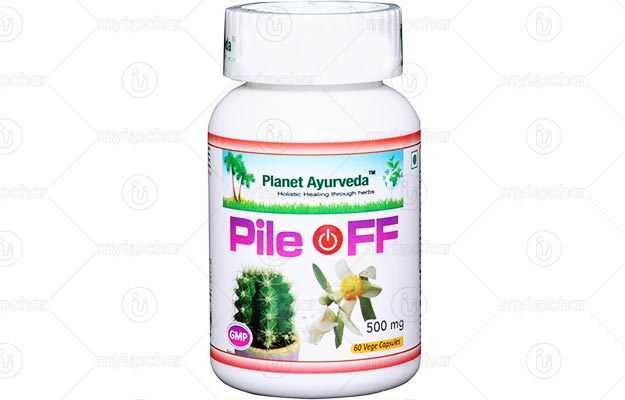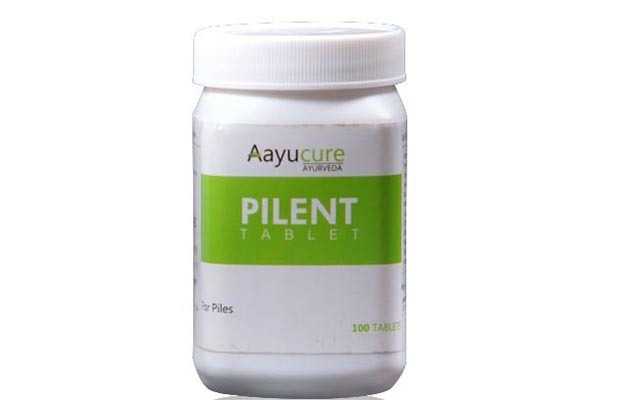Piles, also known as haemorrhoids, refer to the swollen blood vessels in the lower rectum and the anus. It is caused due to excessive straining during bowel movements. The swollen blood vessels cause irritation of the skin that lines the rectum and anus, leading to fleshy projections that block the anal passage. According to Ayurveda, piles occur due to simultaneous vitiation and imbalance of all the three doshas.
Ayurveda describes treatments like abhyanga (oil massage) using jatyadi taila, basti (enema) and matra basti (oil enema) with various Ayurvedic herbs, and sitz baths. Herbs and medicines are also prescribed for the management of piles. Herbs that are commonly recommended by Ayurvedic physicians for the management of piles are manjishtha (Indian madder), haridra (turmeric), haritaki (chebulic myrobalan), kutaja (kurchi) and suran (elephant foot yam). The medicines for piles include kankayana vati and triphala guggulu tablet.






















